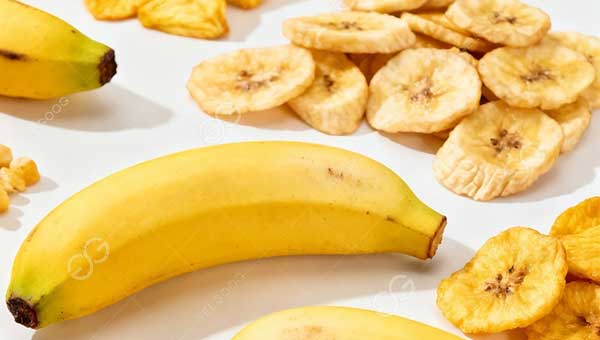Plantain chips are a very popular snack, crispy, thin, and with a natural plantain flavor. So, what makes plantain chips crispy? In the plantain chip processing, the step that truly determines their crispiness is frying.
Although the production process of plantain chips includes several steps such as washing, peeling, and slicing, frying is essential to producing crispy plantain chips.

Where does the crispness come from?
The crispness of plantain chips comes from physical changes that occur during the frying process:
1. Rapid evaporation of internal moisture
When plantain chips are placed in hot oil, the moisture quickly vaporizes and is expelled from the inside of the fruit.
Once the moisture content decreases to a certain level, the texture gradually becomes loose and dry, resulting in a crispy texture.
2. Changes in starch structure:
plantain are rich in starch. Deep-frying at high temperatures causes the starch to gelatinize and reform after dehydration, forming a firm and brittle structure.
3. Slight golden-yellow surface:
Some plantain varieties develop a slight browning on the surface after frying, forming a caramelized layer that adds an extra layer of texture to the crispiness.
What are the key points to control when frying plantain chips?
To ensure crispy, non-greasy, and consistently delicious plantain chips, the following frying techniques are crucial:
1. Stable oil temperature: Generally controlled between 160–180°C.
Oil temperature is the core factor affecting crispness. If the oil temperature is too low, moisture cannot evaporate quickly, and the plantain chips absorb too much oil; if the oil temperature is too high, the surface of the plantain chips will quickly change color while the inside remains moist, easily leading to burning.
2. Does the pre-treatment dehydrate the plantain chips?
Many factories blanch or dehydrate them at low temperatures before frying to reduce the moisture content of the plantain chips, speed up the frying process, and make the plantain chips crispier and less prone to becoming soggy.
3. Slight golden-yellow surface.
Some plantain varieties develop a slight browning on the surface after frying, forming a caramelized layer that adds an extra layer of texture to the crispiness.Of course, in addition to the factors mentioned above, the selection and use of frying machine are also crucial. If you would like to learn more about plantain chips equipment, please contact us.